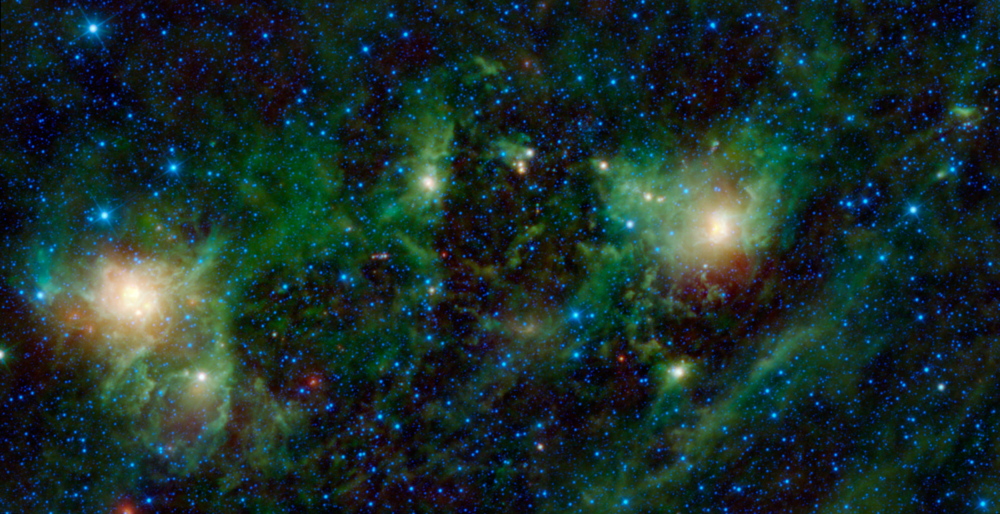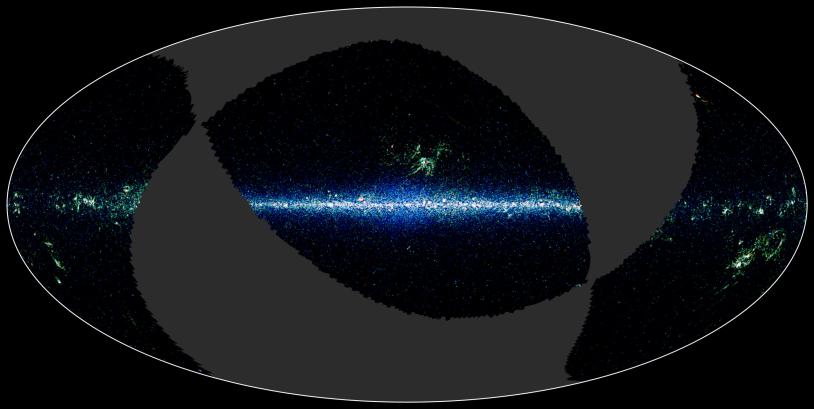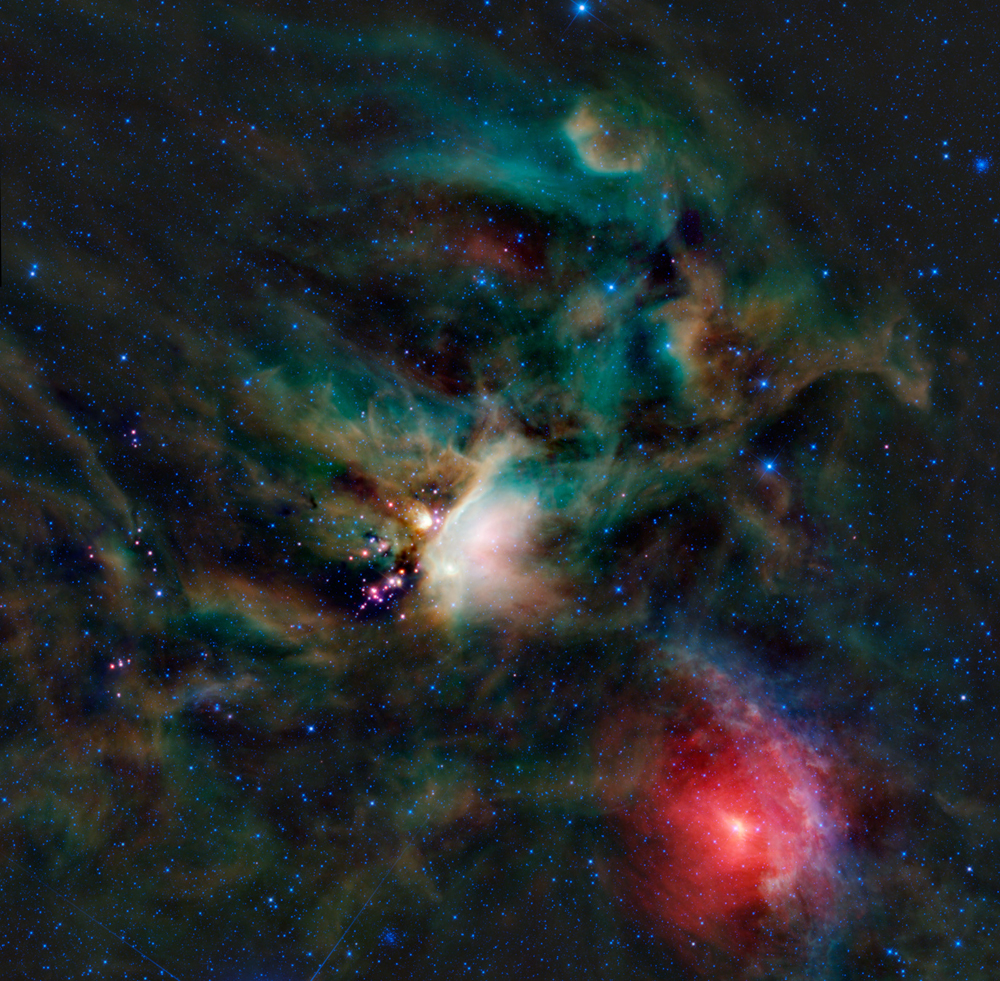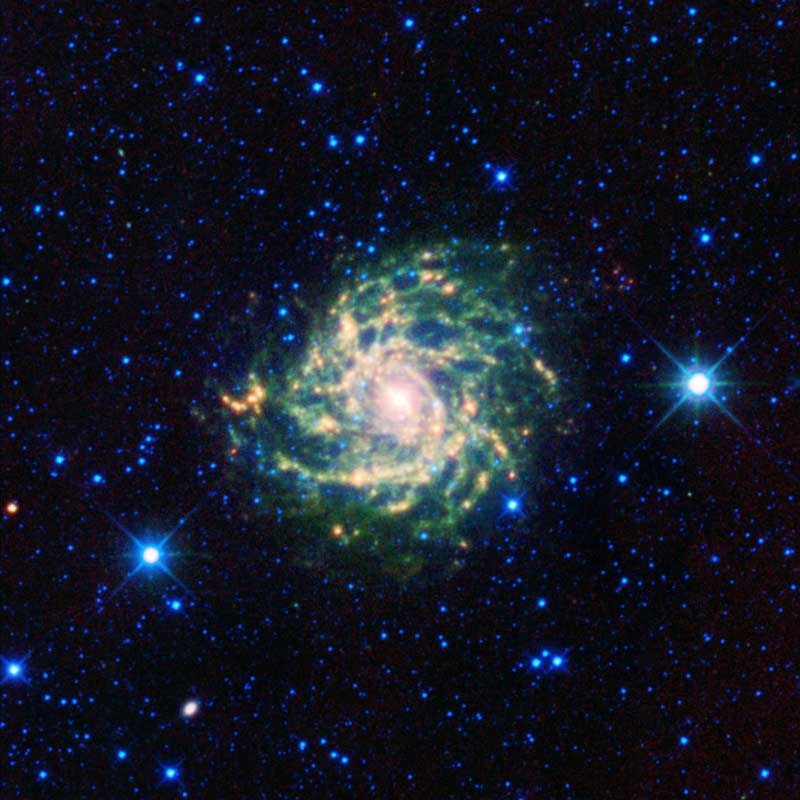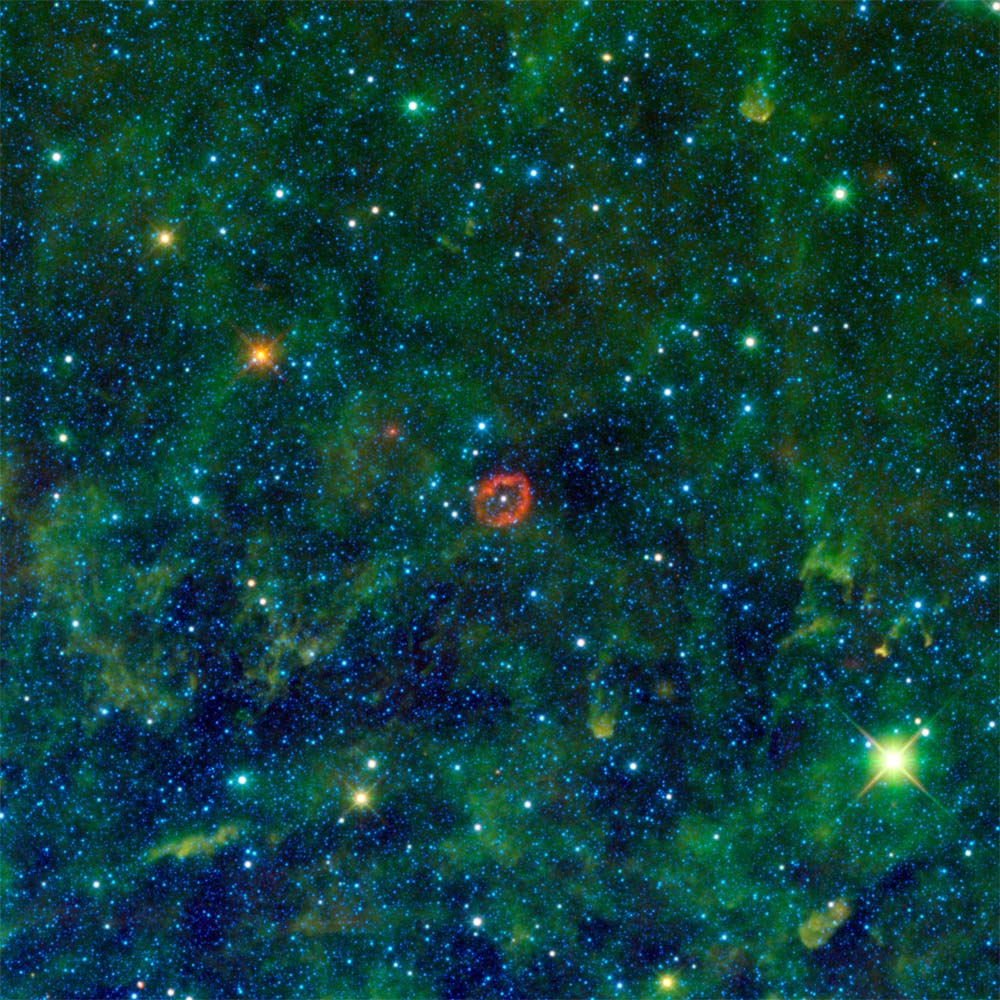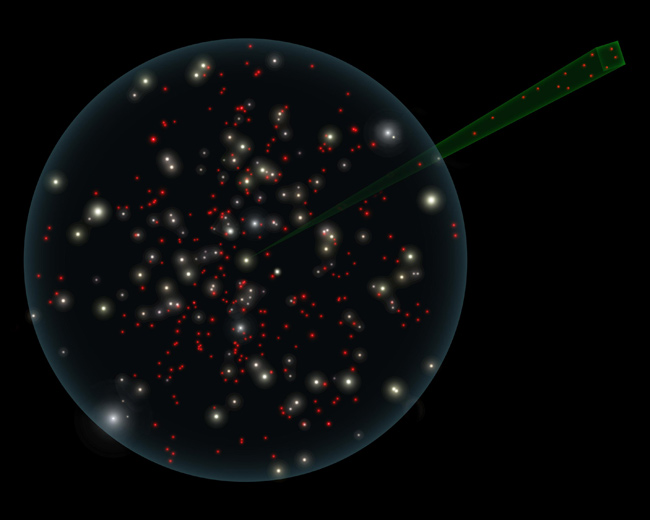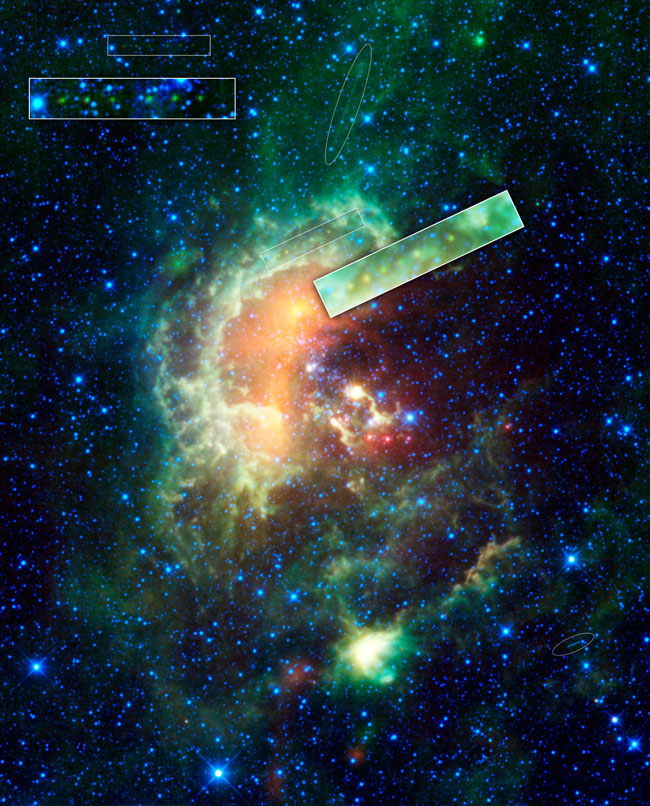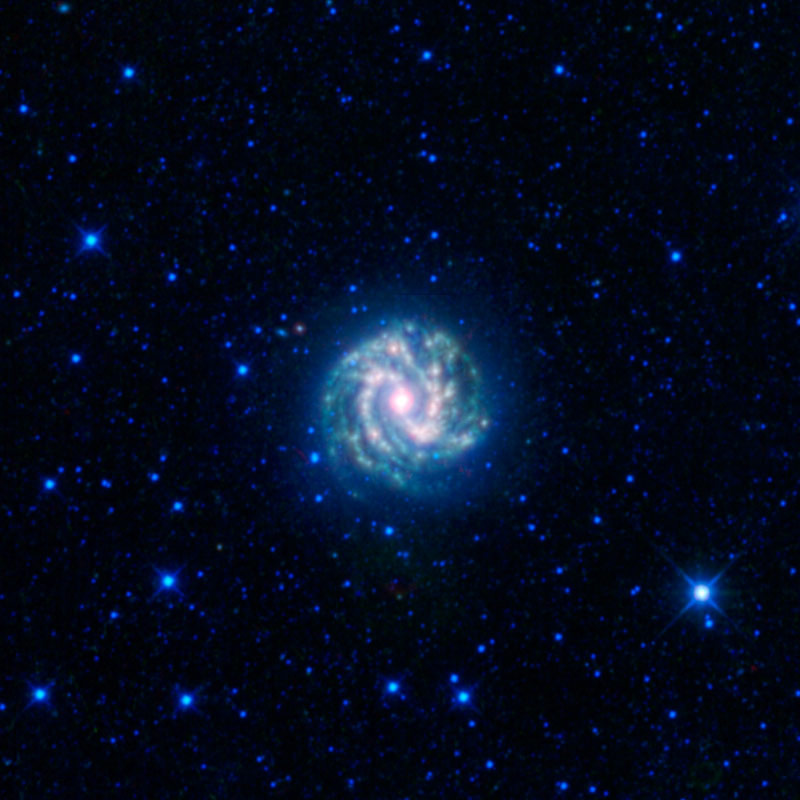WISE Up: Space Photos from NASA's Sky-Mapping Telescope
Cygnus, the Swan
NASA’s Wide-field Infrared Survey Explorer, or WISE, shows a huge complex of star-forming clouds and stellar clusters found in the constellation Cygnus. Viewers can easily see the constellation Cygnus ("the swan") in the northern hemisphere’s summertime sky. The constellation also commonly goes by the name of the Northern Cross. WISE focuses on the region surrounding the swan’s heart, revealing vast clouds of dust that light up the sky in infrared. This image covers an area of the sky almost ten times as wide as the full moon and nine times as high.
Keep Your Distance
The three nebulae in this image may appear close together, but in actuality they reside at different distances from the Earth. Nebula NGC 1491 glows on the right side of this WISE image, SH 2-209 sits on the left side and BFS 34 lies in between. NGC 1491 and BFS 34 are part of the same cloud complex at distance of about 10,700 light-years away in the Perseus arm of the Milky Way Galaxy. SH 2-209 lives farther away at about 16,000 light-years distance, located in the outer arm of the Milky Way.
Big Head Orion
When viewed in infrared light, NASA's Wide-field Infrared Survey Explorer, or WISE, shows a giant nebula around Lambda Orionis, inflating Orion's head to huge proportions.
Mapping the Infrared Universe
The WISE team released 57 percent of the sky survey by WISE in this two-dimensional projection of the whole sky. The fuzzy line down the middle is our Milky Way galaxy.
Rho Ophiuchi
WISE, the Wide-field Infrared Survey Explorer, took this picture of one of the closest star forming regions, a part of the Rho Ophiuchi cloud complex. It lies some 400 light-years from Earth. Dust clouds and embedded newborn stars glow at infrared wavelengths in the false-color composition.
Hidden Galaxy Photographed by Peeping Space Telescope
A leggy cosmic creature, actually the "hiding galaxy" IC 342, comes out of hiding in this new infrared view from NASA's Wide-field Infrared Survey Explorer, or WISE. Full Story.
NASA Telescope Peers Into Heart and Soul of Universe
The Heart and Soul nebulae are seen in this infrared mosaic from NASA's Wide-field Infrared Survey Explorer, or WISE. The image covers an area of the sky over ten times as wide as the full moon and eight times as high in the constellation Cassiopeia.
Breaking space news, the latest updates on rocket launches, skywatching events and more!
Puffy Star Looks Like Cosmic Jellyfish
What looks like a jellyfish floating in a sea of kelp is actually a cloud of material shed by a massive star, in this new image from WISE. Full story Image
Coldest Known Failed Stars Found
This artist's conception shows simulated data predicting the hundreds of failed stars, or brown dwarfs, that NASA's Wide-field Infrared Survey Explorer (WISE) is expected to add to the population of known stars in our solar neighborhood. Our sun and other known stars appear white, yellow or red. Predicted brown dwarfs are deep red.
Asteroid Spotted Passing in Front of Stunning Space Cloud
A new infrared image from NASA's Wide-field Infrared Survey Explorer (WISE) showcases the Tadpole nebula, a star-forming hub in the Auriga constellation about 12,000 light-years from Earth. The asteroid, 1719 Jens, left, tracks across the image, seen as a line of yellow-green dots in the boxes near center. A second asteroid was also observed cruising by, as highlighted in the boxes near the upper left. Also, two satellites orbiting above WISE (highlighted in the ovals) streak through the image, appearing as faint green trails. Full Story
Southern Pinwheel Galaxy Shines In New Photo
The southern Pinwheel Galaxy, or M83, shines in infrared in this new photo taken by NASA's WISE space observatory. Full Story.

Space.com is the premier source of space exploration, innovation and astronomy news, chronicling (and celebrating) humanity's ongoing expansion across the final frontier. Originally founded in 1999, Space.com is, and always has been, the passion of writers and editors who are space fans and also trained journalists. Our current news team consists of Editor-in-Chief Tariq Malik; Editor Hanneke Weitering, Senior Space Writer Mike Wall; Senior Writer Meghan Bartels; Senior Writer Chelsea Gohd, Senior Writer Tereza Pultarova and Staff Writer Alexander Cox, focusing on e-commerce. Senior Producer Steve Spaleta oversees our space videos, with Diana Whitcroft as our Social Media Editor.

